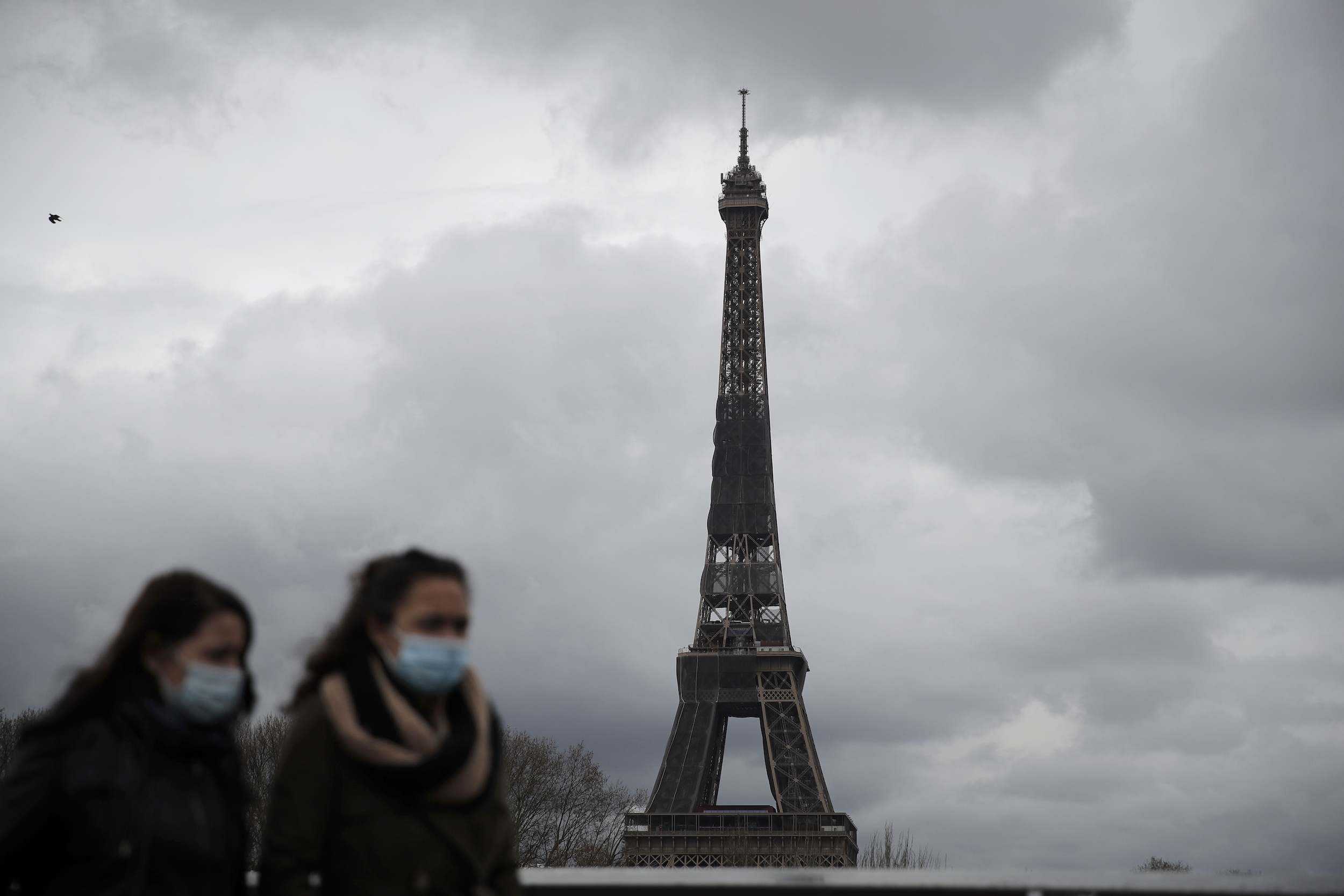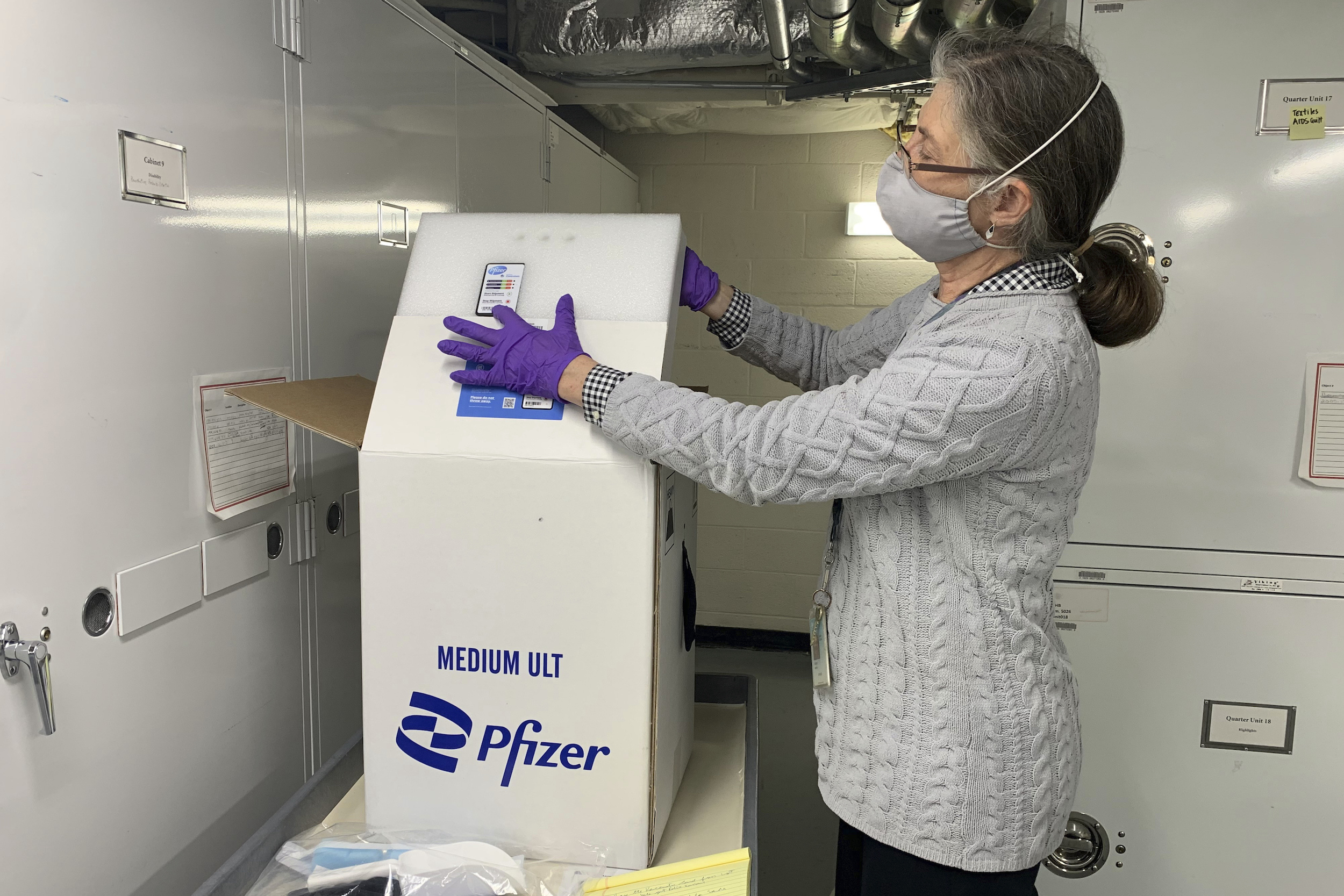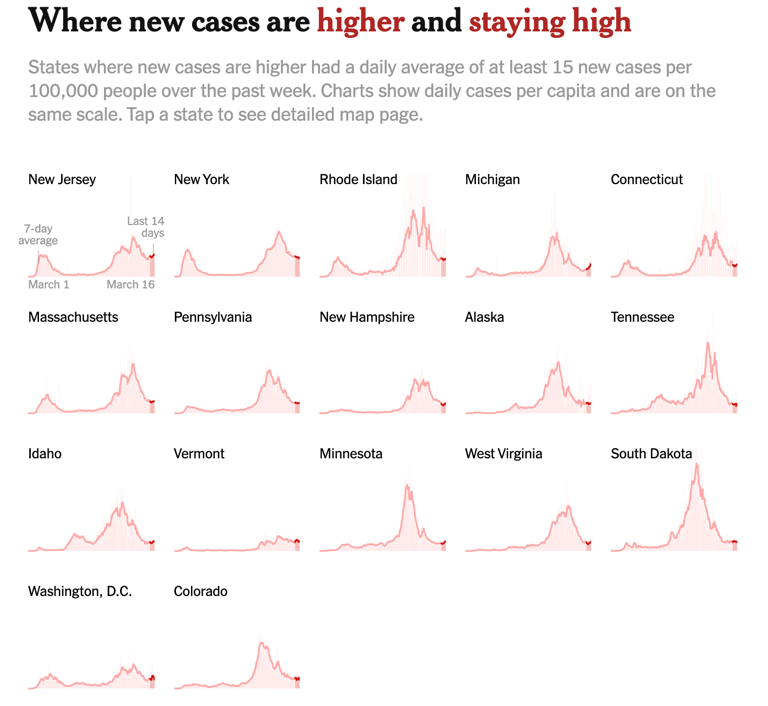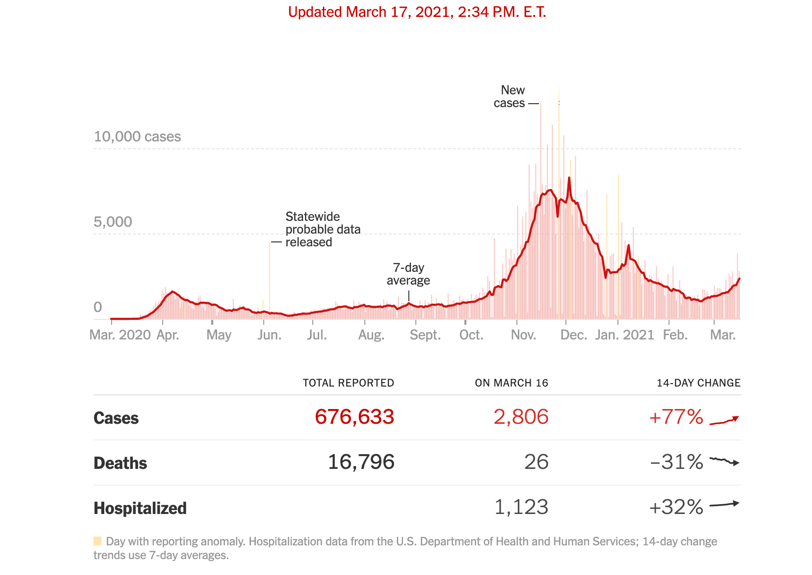 Covering COVID-19 is a daily Poynter briefing of story ideas about the coronavirus and other timely topics for journalists, written by senior faculty Al Tompkins. Sign up here to have it delivered to your inbox every weekday morning.
Covering COVID-19 is a daily Poynter briefing of story ideas about the coronavirus and other timely topics for journalists, written by senior faculty Al Tompkins. Sign up here to have it delivered to your inbox every weekday morning.
The Federal Emergency Management Agency says it will reimburse the families of COVID-19 victims for funeral expenses incurred after Jan. 20, 2020. That could be more than a half-million funerals.
FEMA has a $2 billion budget for this program. The agency estimates individual families can expect reimbursements of between $3,000 to $7,000.
Politico reports that this whole program is likely to become messy because many deaths may have been mislabeled and death records are not kept in a central location.
FEMA has for decades helped Americans cover unexpected and uninsured expenses incurred when their family members die as a result of major disasters like hurricanes or earthquakes, or in other emergency settings. But with more than 500,000 people dead so far, the pandemic funeral program is poised to be the largest the agency has ever mounted. It may also be the messiest.
The Centers for Disease Control and Prevention, which collect mortality data on the pandemic, has advised FEMA that — for logistical and regulatory reasons — CDC cannot verify whether individual deaths are Covid-related. Instead, the disaster agency will need to lean on overburdened state health agencies and medical institutions to cross-reference federal data with death certificates.
Families will have to prove they are next of kin. They will need death certificates saying COVID-19 was the cause of death. They cannot have already made a funeral expenses claim through another agency such as the Veterans Affairs benefits program.
FEMA says it is still working on how to process the claims.
We are working with stakeholder groups to get their input on ways we can best provide this assistance, and to enlist their help with outreach to families and communities. FEMA will begin to implement COVID-19 funeral assistance in April.
Additional guidance is being finalized and will be released to potential applicants and community partners as soon as possible. In the meantime, people who have COVID-19 funeral expenses are encouraged to keep and gather documentation.
FEMA did set out the requirements. As you will see, the person filing the claim must be a legal citizen or resident but the person who died does not have to have been in the country legally.
- The death must have occurred in the United States, including the U.S. territories, and the District of Columbia.
- The death certificate must indicate the death was attributed to COVID-19.
- The applicant must be a U.S. citizen, non-citizen national, or qualified alien who incurred funeral expenses after January 20, 2020.
- There is no requirement for the deceased person to have been a U.S. citizen, non-citizen national, or qualified alien.
What will be covered? The Congressional Research Service spells it out:
FEMA provides Funeral Assistance for disaster-caused funeral expenses. Not all of the expenses associated with the death of a household member are eligible for Funeral Assistance. FEMA’s guidance lists eligible expenses associated with interment or reinterment, which include:
- remains transfer;
- caskets/urns;
- burial plots/cremation niches;
- markers/headstones; and
- additional state/local/territorial/tribal (SLTT) government mandated expenses.
Eligible interment expenses include:
- transportation to identify the deceased (up to two people), if required by SLTT authorities;
- interment;
- funeral services;
- clergy/officiant services; and
- death certificate costs (up to five).
Eligible reinterment expenses include:
- reinterment;
- funeral services (with limitations); and
- the cost of identifying disinterred remains.
Politico says FEMA is bracing for all kinds of fraudulent claims and even multiple claims from family members:
Now FEMA is scrambling to find safeguards that would prevent fraudsters from forging death certificates in an attempt to collect thousands of dollars for funerals that either never happened or were for people who died from another cause.
“There’s more room for error here because more people have died with Covid,” said one of the senior officials, who requested anonymity to speak freely about the agency’s concerns. “At the same time, it takes a lot of effort to fake these documents. I don’t know if people are going to want to do all that for a potentially small payout.”
The official said FEMA will also likely run into situations where multiple family members submit for reimbursement for the same death.
France joins Italy with new COVID-19 restrictions today

Women cross a bridge as the Eiffel Tower is seen background in Paris, Thursday, March 18, 2021. The French government is preparing to announce new coronavirus restrictions that could include a lockdown of the Paris region and in the north of France as the number of COVID-19 patients in intensive care units spikes. (AP Photo/Christophe Ena)
French Prime Minister Jean Castex announced that starting today, the country is imposing new COVID-19 restrictions, including in Paris and Nice. The restrictions will last at least a month.
Castex said the virus’ resurgence means that in France, one person enters intensive care every four minutes. He said it is becoming clear that his country is entering a “third wave” with a 23.6% increase in cases in the last week.
“This is clearly about allowing for people to be outside, but not to go to friends’ homes to have a party or meet with many people without social distancing or a face mask,” Castex said. “We know that it is in that kind of situation that the virus prospers.”
The government encouraged people to work from home. Schools and essential shops will stay open.
But here is where the restrictions will cause some consternation: People will be allowed to go outdoors to walk or exercise but must have an approval “certificate.” In addition, people must have a “valid reason” if they want to go further than 10 kilometers (about six miles) from their home. There will also be nightly curfews starting at 7 p.m.
Of note, French authorities say three-quarters of the new cases involve the variant first identified in the United Kingdom.
On Thursday, Dr. Anthony Fauci warned U.S. senators once again that what is unfolding in France and Italy could well arrive in the United States if Americans relax mask usage, social distancing and if they refuse vaccines.
New COVID-19 cases are rising in almost a third of all states. Are new cases what we should worry about?
This pandemic forces us to keep asking questions about what data matters most at the moment. Cases are starting to rise again around the country, but reasonable people are asking whether that data means the same thing it meant last year.
A year ago, when cases rose, we could predict that within weeks, deaths would rise, too. But now that vaccines are protecting many of the most vulnerable among us, new cases will not be as likely to result in deaths or hospitalizations. It is a reasonable issue to explore while keeping in mind that a growing number of those new cases are from more dangerous and infectious variants of the first coronavirus that threatened us a year ago.
Some states are seeing new COVID-19 cases drop fast. Kansas is down to 260 new cases a day from a high of 2,000 cases a day in January. But 17 states are counting a rise in new cases. For example, The New York Times maps the trends:
Look at the Michigan chart. The numbers are concerning looking at just the raw percentages, as new cases have increased 50% over the last two weeks. But as the chart shows, the current situation is significantly improved from the post-holiday surge.
Michigan’s new case count is higher than one year ago and higher than any time between April and mid-October last year.
Three significant AstraZeneca vaccine updates
The drug regulator for the European Union said the AstraZeneca vaccine is safe but, in almost the same breath, said it is true that there could be a link between the vaccine and blood clots. A dozen countries put their vaccinations on hold while experts sorted out the questions about the AstraZeneca vaccine.
The new reassurance seems to have been enough to convince Spain to start up vaccinations again starting Wednesday.
The United States, which has not approved the AstraZeneca vaccine, is planning to ship millions of doses to Mexico and Canada. Both countries have approved the drugs, which are sitting in warehouses right now.
Mexico specifically asked for the doses and the Biden administration responded, also asking Mexico to do more to stop a stream of immigrants from coming across the border. The White House said the conversations are not related but are overlapping.
How to end-run the vaccine signup portals
The vaccine signup process should not be so complicated and so arcane that people create Facebook groups to help each other find a shot. But that is what is happening. The Florida Vaccine Hunters group, with close to 12,000 members, built a spreadsheet that tells people when and where to call for vaccine appointments including phone numbers and who to ask for when you call. There are even workarounds for how to navigate automated phone trees and carefully crafted questions to try to get on a list.
Museums are snapping up pandemic-related items

Curator Diane Wendt shows that specialized container used to ship super cold doses of the Pfizer COVID-19 vaccine in Washington, on Monday, March 8, 2021. The package and other items related to the first dose of vaccine administered in the U.S. have been donated to the Smithsonian’s Museum of American History. (AP Photo/Ashraf Khalil)
It may be difficult to recognize at the moment that you are living at a historic time. Museums see this moment for what it is and are holding on to the first vial that contained a COVID-19 vaccine. The Smithsonian’s National Museum of American History was also happy to procure the special containers used to ship and store the vaccines. Some day you will walk through the museum and tell your grandkids stories. And they will still be more interested in the gift shop.
Why losing your sense of smell is more than an inconvenience
COVID-19 robbed so many people of their sense of smell. For some, it returns. For others, not yet. You might be under the impression that it is an inconvenience. But it is more than that as this opinion writer for USA Today points out. Think about all of the times when your sense of smell warned you of the dangers of smoke or expired food. Think of the pleasures of life you lose when you cannot smell a pumpkin pie or a baby’s skin.
We are paying a high price for skipping cancer screenings in the pandemic
Before the pandemic, when people went to CT scans to investigate lung nodules, the scans turned up about 8% positive cases. Then, when the pandemic started, people stopped getting the scans for several months. By the time we started going back for tests, the CT scans turned up suspicious nodules in 29% of cases. Researchers at the University of Cincinnati found:
COVID-19 caused significant disruption in lung cancer screening, leading to a decrease in new patients screened and an increased proportion of nodules suspicious for malignancy once screening resumed.
This is a big setback. Lung cancer cases have been dropping fast in the United States (but still account for around 145,000 deaths a year, making it the leading cause of death from cancer). One reason for the drop in lung cancer deaths is early detection.
An Associated Press story points out that if the delay in screenings picks up to a more normal rate, the mortality rate from cancers may not change much or at all.
Dr. Ned Sharpless, director of the U.S. National Cancer Institute, estimates there could be nearly 10,000 excess deaths over the next decade because of delayed detection and treatment of breast and colon cancers. Postponing care “was prudent at one time” because of the risks of COVID-19 exposure but deferring for too long “may turn one public health crisis into many others,” he wrote in the journal Science.
The pandemic also bred some creative solutions, such as wider use of tests that can be done at home. In Philadelphia, a large church partnered with local doctors and used its drive-thru flu shot program to also pass out stool tests for colon cancer screening.
Where did the March Madness schools come up with those NCAA mascots?
The Indianapolis Business Journal produced a fun gallery of the team mascots who represent the March Madness schools. They include eagles, cats, dogs, assorted mammals, reptiles, humans and even a bundle of wheat.
We’ll be back Monday with a new edition of Covering COVID-19. Are you subscribed? Sign up here to get it delivered right to your inbox.










